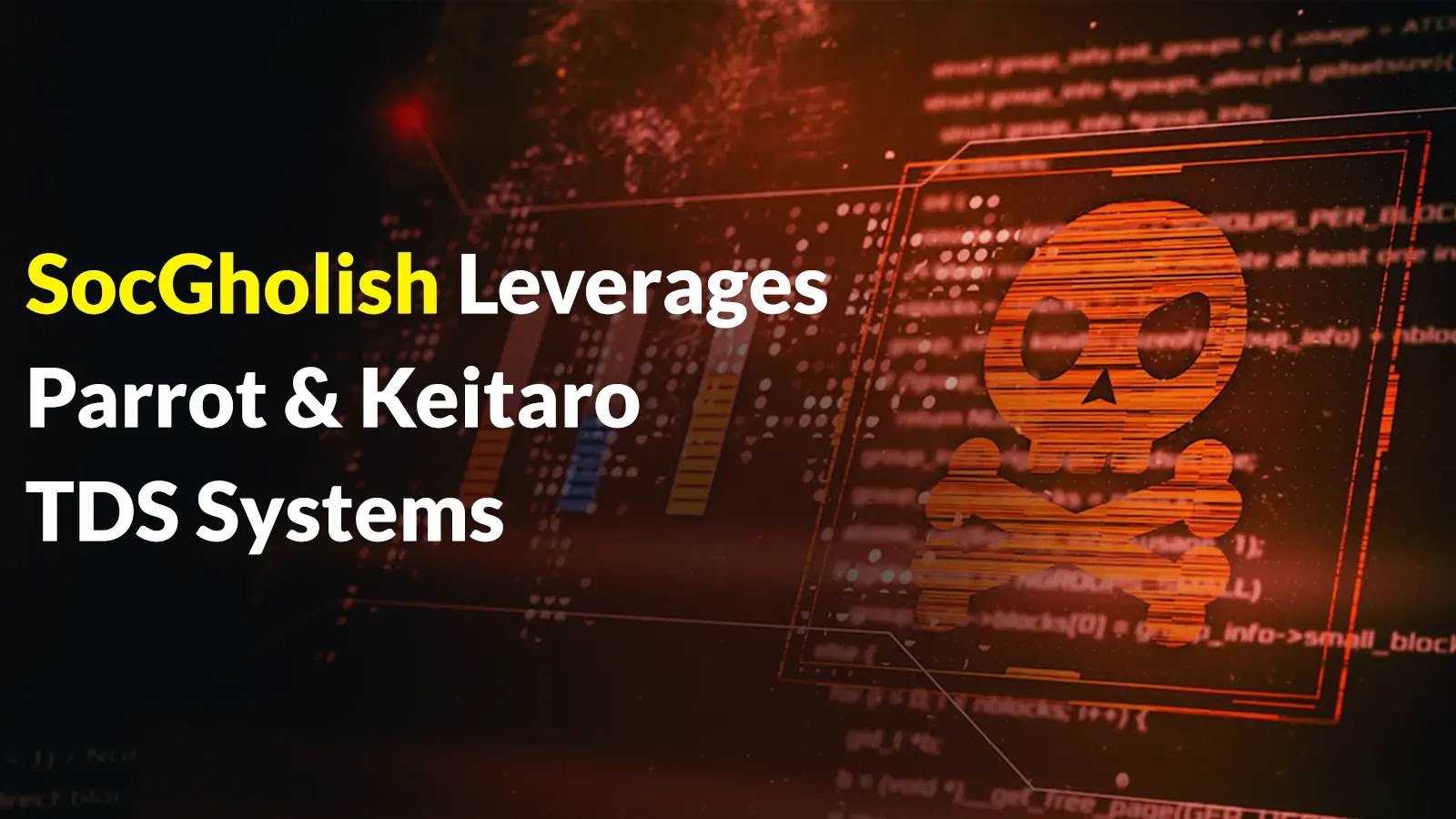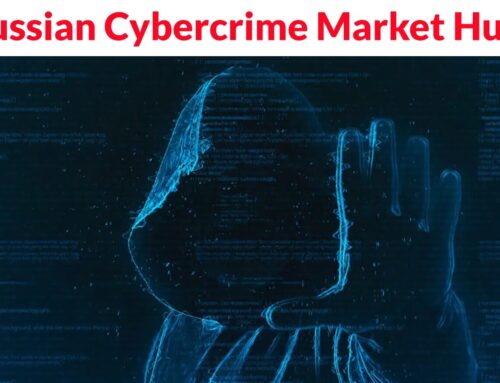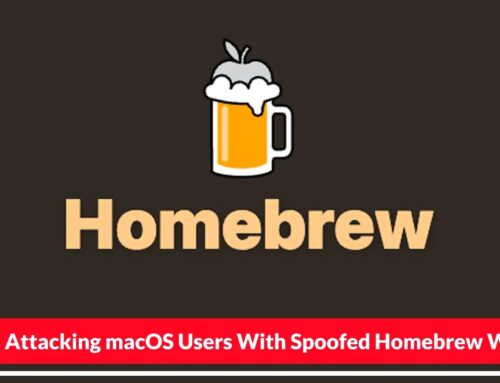
SocGholish Leverages Parrot and Keitaro TDS Systems to Push Fake Updates and Deliver Malware
The digital landscape is a constant battleground, and threat actors are relentlessly innovating. One particularly insidious operation, dubbed SocGholish, has evolved into a formidable threat, leveraging sophisticated tactics to deliver malware under the guise of legitimate software updates. This analysis delves into how SocGholish employs Traffic Direction Systems (TDS) like Parrot and Keitaro to orchestrate its deceptive campaigns and compromise unsuspecting users.
Understanding SocGholish: A Persistent Threat
SocGholish is not a new player in the cybercrime arena. Operated by the cybercriminal group TA569, it has a history of masquerading as genuine software updates. What began as a relatively simple fake update framework has matured into a complex Malware-as-a-Service (MaaS) operation. This evolution signifies a dangerous shift, allowing other malicious actors to utilize SocGholish’s infrastructure to distribute their own nefarious payloads.
The Role of Traffic Direction Systems (TDS)
At the heart of SocGholish’s deception are Traffic Direction Systems (TDS). These sophisticated platforms are designed to filter and redirect web traffic based on various criteria. For legitimate businesses, TDS can optimize ad campaigns or route users to localized content. However, in the hands of threat actors like TA569, TDS becomes a potent tool for malicious intent. By analyzing factors such as IP address, geographic location, operating system, browser type, and even referrer URLs, TDS can determine whether a visitor is a legitimate target or a security researcher, ultimately serving different content accordingly. This allows SocGholish to present seemingly innocuous content to security analysts while delivering malicious payloads to vulnerable users.
Parrot and Keitaro: SocGholish’s Weapons of Choice
The cybersecurity community has identified two prominent TDS platforms leveraged by SocGholish: Parrot TDS and Keitaro TDS. Both are commercially available and offer robust traffic filtering and redirection capabilities. Threat actors exploit these features to precisely target victims and evade detection. When a user unwittingly lands on a compromised website hosting the SocGholish malicious script, the incorporated TDS springs into action. It meticulously analyzes the user’s system and network characteristics. If the user fits the profile of a desirable target, they are seamlessly redirected to a page disguised as a software update (e.g., a browser update or a Flash Player update). These fake updates are, in reality, droppers designed to download and execute various malware strains.
The Deceptive Attack Chain
The SocGholish attack chain is characterized by its subtlety and sophisticated evasion techniques:
- Compromised Websites: Threat actors often compromise legitimate, often popular, websites and inject malicious JavaScript code. This code is responsible for initiating the SocGholish infection sequence.
- TDS Evaluation: When a user visits the compromised website, the injected JavaScript communicates with the SocGholish C2 (Command and Control) server. The TDS then evaluates the user’s system for attributes that indicate a genuine browsing session versus security analysis.
- Fake Update Delivery: If the user passes the TDS’s scrutiny, they are redirected to a convincing fake update page. These pages are meticulously crafted to mimic official update prompts from reputable software vendors.
- Malware Delivery: Clicking on the “update” button triggers the download of a malicious file, typically a JavaScript file, which then executes a series of commands to download and install various malware, including infostealers, ransomware, or remote access Trojans (RATs).
Recent campaigns have seen SocGholish deliver a range of malware, highlighting its flexibility as a MaaS operation. While a specific CVE for the SocGholish operation itself is not applicable as it is a campaign and not a single vulnerability, the malware it delivers often exploits known vulnerabilities. For instance, the widespread use of initial access brokers (IABs) by SocGholish could lead to the delivery of ransomware, which often leverages vulnerabilities like SMBGhost (related to CVE-2020-0796).
Remediation Actions and Prevention Strategies
Defending against sophisticated operations like SocGholish requires a multi-layered approach:
- Employee Training and Awareness: Educate users about the dangers of pop-up browser updates, unsolicited software downloads, and suspicious links. Emphasize verifying legitimate update sources directly from vendor websites.
- Regular Software and OS Updates: Ensure all operating systems, web browsers, and applications are kept up-to-date with the latest security patches. This mitigates vulnerabilities that malware might exploit.
- Robust Endpoint Detection and Response (EDR)/Antivirus: Deploy and maintain EDR solutions that can detect and prevent malicious activities, including script execution, fileless malware, and unusual network connections.
- Network Traffic Monitoring: Implement solutions that monitor outbound network connections for suspicious activity indicative of C2 communication.
- Web Filtering and DNS Security: Utilize web filtering tools and DNS security services to block access to known malicious domains and IP addresses associated with SocGholish and other threat actors.
- Browser Security Settings: Configure web browsers to block third-party cookies and script execution from untrusted sources, if enterprise policy allows.
- Principle of Least Privilege: Limit user privileges to prevent the installation of unauthorized software.
Tools for Detection and Mitigation
Organizations can leverage various tools to enhance their defense against threats like SocGholish:
| Tool Name | Purpose | Link |
|---|---|---|
| Endpoint Detection and Response (EDR) Solutions | Real-time threat detection, incident response, and behavioral analysis on endpoints. | (Specific vendor links omitted as this is conceptual) |
| Network Intrusion Detection/Prevention Systems (NIDS/NIPS) | Monitor network traffic for malicious activity and block intrusion attempts. | (Specific vendor links omitted as this is conceptual) |
| DNS Filtering Services (e.g., Cisco Umbrella, Cloudflare Gateway) | Block access to malicious domains at the DNS level. | (Specific vendor links omitted as this is conceptual) |
| Web Application Firewalls (WAFs) | Protect web applications from various attacks, including script injection. | (Specific vendor links omitted as this is conceptual) |
| Threat Intelligence Platforms (TIPs) | Provide up-to-date information on emerging threats, IOCs, and attack trends. | (Specific vendor links omitted as this is conceptual) |
Conclusion
SocGholish stands as a testament to the persistent and evolving nature of cyber threats. Its adept use of TDS systems like Parrot and Keitaro allows TA569 to precisely target victims, bypass security measures, and maintain a highly effective Malware-as-a-Service operation. Understanding their tactics, particularly the sophisticated use of traffic direction systems, is crucial for developing robust defenses. Proactive security measures, continuous monitoring, and comprehensive employee training are essential in mitigating the risk posed by such advanced deceptive campaigns.





